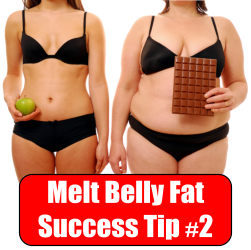What if You Were Told to Stop Dieting?
Doesn’t that sound fabulous? The problem with many people today is that they have been told several myths about nutrition and dieting. The problem with most diets is they do not deliver all of the nutritional goodies that your body needs. So your body begins to crave things which are not healthy for you in its search of what is lacking.
Your diet fails, and you gain weight. If you stop dieting today and start eating “real” food that is whole and unprocessed, you will not only achieve and maintain a healthy weight, but you will improve your heart health and your chances at living a long and fitful life.
Another untruth which you may have been told is to follow a fat-free diet to lose weight. Did you know that many fat-free foods are chock-full of unhealthy nitrates and sugars? Your body actually needs fat in your diet, as long as it is healthy fats. These are found in the whole, unprocessed foods like nuts, fruits and vegetables.
These are usually very low in calories and extremely high in the essential vitamins and nutrients that your body does need. So instead of gaining weight by eating a sugar-filled fat-free diet, you lose weight and fat.
When foods are modified to last longer on store shelves, the effect is unnatural. Remember that most one ingredient foods like an apple or banana are perfect as is.
Did you know removing the pulp to make apple juice causes it to lose most of its value for both overall health and weight loss? A typical apple contains just 72 calories and a healthy 3 grams of fiber. But 8 ounces of store-bought apple juice nearly doubles the calorie count to 120, and you receive no helpful fiber at all.
Stop Dieting and Stick to Whole Foods
Stick to whole foods and your weight loss efforts are rewarded. When you stop “dieting” and simply eat what you already know you should, unprocessed foods like dried beans and peas, whole grains, fish and lean meat, you will find your body quickly heading in the direction of its ideal weight. You will also find that you can eat more while consuming fewer calories and “bad fats”, and this in turn helps you drop the pounds.
This is because natural vegetables, fruits and whole grains are extremely high in complex carbohydrates and fiber that help regulate your digestive system.
When your digestive system is not working perfectly, your body begins to store fat. And the reason why many people today overeat is because processed foods have much less nutrition, vitamins and nutrients than a natural diet delivers.
Stop Dieting and Stop Eating Processed Foods
Processed food is also chock full of preservatives, sugars, sodium, trans and saturated fats. These will lead to fat and weight gain, and also take years off of your life. And since your body notices less fiber and nutrients coming in, you eat more of those bad foods to attempt to get what your body is so powerfully craving.
One of the great benefits of today’s technologically advanced information-filled society is the ready knowledge that fruits, vegetables and whole grains form a healthy diet.
Yes, doughnuts and fatty salad dressings taste great. But they can lead to fat and weight gain, and a multitude of health problems. To stop dieting, stick to whole, unprocessed foods for the bulk of your diet when you want to lose weight and gain total body health.









